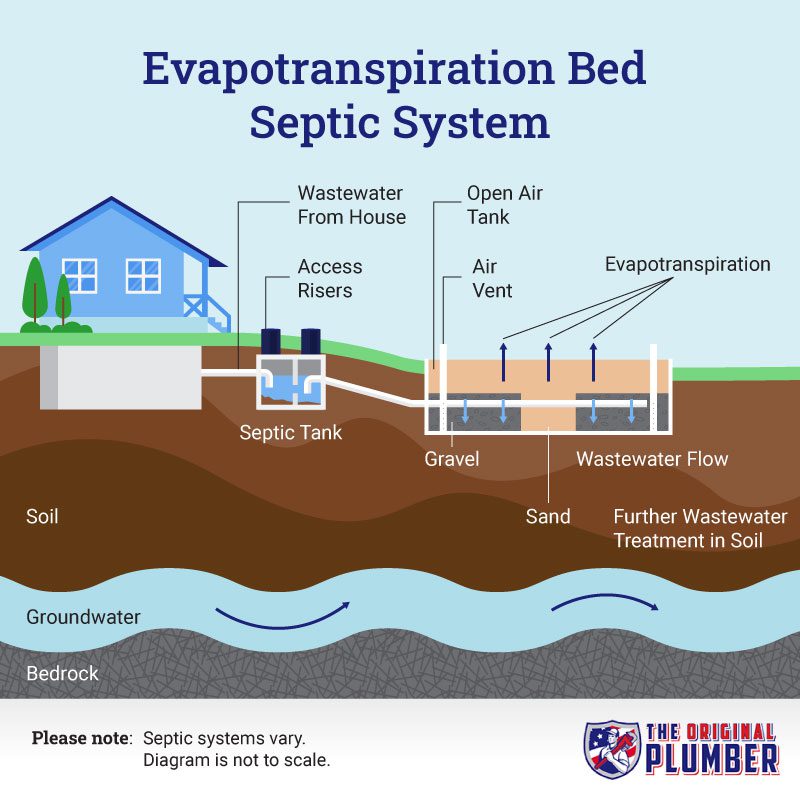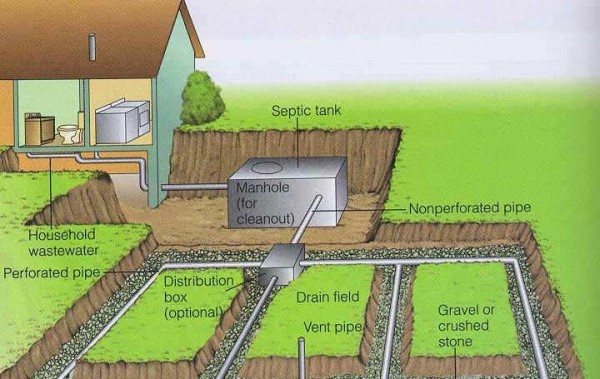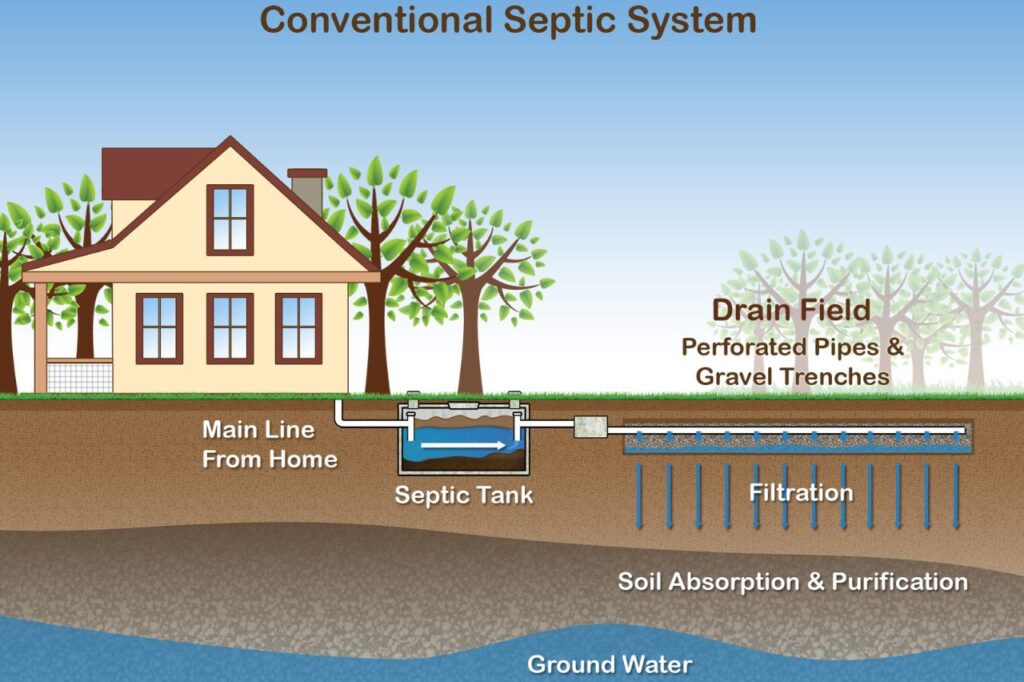Looking for the right septic system? Our detailed comparison of various options will help you choose the best system for your needs. Learn about conventional systems, alternative options, costs, and more.
In this article, we will explore the various types of septic systems available and help you determine which one is right for you. You’ll learn about conventional systems like septic tanks and drainfields, as well as alternative options such as drip distribution, aerobic treatment units, and mound systems. We’ll discuss how each system works, its advantages and disadvantages, and the costs associated with purchasing and maintaining them. By the end of this article, you’ll have a better understanding of which septic system is best suited to your needs and circumstances.
Which Type of Septic System is Right for You? A Comparison
Septic systems are an important part of rural and suburban living, providing a safe and effective way to treat and dispose of household wastewater. However, with so many different types of septic systems available, it can be overwhelming to choose the right one for your needs. Factors such as household size, soil type, site slope, proximity to sensitive water bodies, and local regulations can all affect the design and size of a septic system. In this article, we will compare ten common types of septic systems, discussing their design, components, functionality, pros and cons, as well as the cost to purchase and maintain.

Conventional Septic Systems
Design and Components
The most common type of septic system is the conventional septic system, which consists of two main components: a septic tank and a drainfield. The septic tank is a buried, watertight container that holds the wastewater from your home. The tank separates solids from liquids, allowing the solids to settle to the bottom and the liquids to flow into the drainfield. The drainfield, also known as a leach field, is a shallow, underground system of perforated pipes that distribute the treated wastewater into the soil.
How they work
Conventional septic systems work by allowing gravity to transport wastewater from the home into the septic tank. The solids settle to the bottom of the tank, forming a layer of sludge, while the liquids pass into the drainfield. In the drainfield, the wastewater is further treated as it percolates through the soil, where beneficial bacteria and natural processes remove contaminants before the water reaches groundwater sources.
Pros and cons
Conventional septic systems have several advantages. They are simple in design, reliable, and can be cost-effective compared to other types of systems. They also have a long lifespan if properly maintained. However, they may not be suitable for all sites, particularly those with shallow soil, high groundwater levels, or steep slopes. In these cases, alternative septic systems may be necessary.
Cost to purchase and maintain
The cost of purchasing and installing a conventional septic system will vary depending on factors such as tank size, drainfield size, local labor costs, and permits. On average, homeowners can expect to spend between $3,000 and $10,000 for a conventional system, including installation. Maintenance costs are relatively low, consisting mainly of regular pumping of the septic tank every 3-5 years, which can range from $200 to $500 per service.
Chamber Systems
Design and Components
Chamber systems are an alternative to traditional gravel or stone drainfields. Instead of using traditional gravel, chamber systems utilize interconnected chambers that are filled with soil. These chambers provide a larger surface area for wastewater to infiltrate the soil and promote better treatment.
How they work
Chamber systems work similarly to conventional septic systems, with wastewater flowing from the home into a septic tank. From the tank, the wastewater is then distributed to the chamber system. The chambers provide additional contact between the effluent and the soil, allowing for better treatment and absorption.
Pros and cons
One of the major advantages of chamber systems is their ease of installation. They require fewer materials and less excavation compared to traditional drainfields. They are also more resistant to clogging, as the chambers have self-cleaning features. However, chamber systems may be more expensive to purchase and maintain than conventional systems.
Cost to purchase and maintain
The cost of purchasing and installing a chamber system will vary depending on factors such as chamber size, soil conditions, and labor costs. On average, homeowners can expect to spend between $5,000 and $15,000 for a chamber system, including installation. Maintenance costs are similar to conventional systems, with regular septic tank pumping recommended every 3-5 years.

Drip Distribution Systems
Design and Components
Drip distribution systems are designed to disperse effluent into the top few inches of soil using drip laterals. These systems utilize a network of small pipes with evenly spaced emitters that deliver wastewater directly to the soil, promoting even distribution and treatment.
How they work
Drip distribution systems work by transporting effluent from the septic tank to a distribution box. From the distribution box, the effluent is then delivered to the drip laterals, which distribute the wastewater evenly throughout the designated area. The effluent is applied at a slow and controlled rate, allowing for better treatment and absorption by the soil.
Pros and cons
Drip distribution systems offer several advantages, including efficient and uniform distribution of effluent, reduced risk of system failure due to clogging, and the ability to handle high wastewater flows. However, they may have higher installation costs compared to conventional systems and may require more specialized maintenance.
Cost to purchase and maintain
The cost of purchasing and installing a drip distribution system can vary depending on factors such as the size of the system, the number of drip laterals, soil conditions, and labor costs. On average, homeowners can expect to spend between $8,000 and $15,000 for a drip distribution system, including installation. Maintenance costs may be higher compared to conventional systems, as the drip laterals may need periodic flushing or replacement.
Aerobic Treatment Units
Design and Components
Aerobic treatment units (ATUs) are designed to increase the bacterial activity in the treatment tank by injecting oxygen. They consist of multiple chambers, including a pretreatment chamber, an aeration chamber, and a clarification chamber. These chambers work together to provide enhanced treatment and reduce the amount of solids in the effluent.
How they work
ATUs work by introducing oxygen into the treatment tank, which promotes the growth of aerobic bacteria. These bacteria break down organic matter more efficiently than the anaerobic bacteria found in conventional septic systems. The treated effluent is then discharged to a drainfield or a disinfection unit before being released into the environment.
Pros and cons
One of the significant advantages of ATUs is their ability to provide superior treatment compared to conventional systems. They can reduce the levels of nitrogen and phosphorus in the effluent, making them suitable for sites with strict water quality requirements or sensitive ecosystems. However, they may have higher energy consumption and maintenance requirements compared to conventional systems.
Cost to purchase and maintain
The cost of purchasing and installing an ATU will vary depending on factors such as system size, technology, and labor costs. On average, homeowners can expect to spend between $10,000 and $20,000 for an ATU, including installation. Maintenance costs may also be higher due to the need for regular inspection, monitoring, and potential replacement of components.

Mound Systems
Design and Components
Mound systems are specifically designed for areas with shallow soil depth, high groundwater levels, or shallow bedrock. These systems consist of a sand mound that is constructed above the natural ground surface. The sand mound provides additional treatment and absorption of wastewater.
How they work
Mound systems work similarly to conventional septic systems, with wastewater flowing from the home into a septic tank. From the tank, the effluent is then pumped to the sand mound, where it is distributed over a large area. The effluent then filters through the sand, providing additional treatment before it reaches the underlying soil or groundwater.
Pros and cons
One of the significant advantages of mound systems is their ability to overcome site limitations, such as shallow soil or high water table. They can provide reliable treatment and absorption in areas where conventional systems may not be feasible. However, mound systems may be more expensive to install and maintain compared to conventional systems.
Cost to purchase and maintain
The cost of purchasing and installing a mound system will vary depending on factors such as mound size, soil conditions, and labor costs. On average, homeowners can expect to spend between $15,000 and $25,000 for a mound system, including installation. Maintenance costs may also be higher due to the additional monitoring and potential replacement of components.
Recirculating Sand Filter Systems
Design and Components
Recirculating sand filter systems utilize sand as a filter media to treat wastewater. They consist of a buried treatment tank that contains several layers of specially selected sand and gravel. Wastewater is pumped into the tank and filters through the sand, providing treatment before being dispersed into the soil or discharged to a drainfield.
How they work
Recirculating sand filter systems work by pumping wastewater into the treatment tank. The wastewater is then distributed over the sand layer, where it filters through the sand and gravel, removing contaminants and promoting further treatment. The effluent is then dispersed into the soil or sent to a drainfield for additional absorption.
Pros and cons
One of the advantages of recirculating sand filter systems is their ability to provide excellent treatment of wastewater, removing a wide range of contaminants. They can handle high wastewater flows and are suitable for sites with limited space or challenging soil conditions. However, they may have higher installation and maintenance costs compared to conventional systems.
Cost to purchase and maintain
The cost of purchasing and installing a recirculating sand filter system will vary depending on factors such as tank size, treatment capacity, and labor costs. On average, homeowners can expect to spend between $15,000 and $30,000 for a recirculating sand filter system, including installation. Maintenance costs may also be higher due to the periodic replacement of sand and gravel media.

Evapotranspiration Systems
Design and Components
Evapotranspiration systems, also known as ET systems, are designed to evaporate wastewater into the air. They are typically only suitable for arid or semi-arid climates where evaporation rates are high and soil absorption rates are low. ET systems can utilize various components, such as shallow basins, spray heads, or subsurface pipes.
How they work
Evapotranspiration systems work by collecting wastewater in a shallow basin or applying it through spray heads or subsurface pipes. The wastewater is then exposed to the air, allowing evaporation to occur. As the water evaporates, nutrients and contaminants are left behind, promoting natural treatment.
Pros and cons
The main advantage of evapotranspiration systems is their ability to effectively treat wastewater without the need for a drainfield or direct discharge to the soil. They can be suitable for sites with limited space or challenging soil conditions. However, they are highly dependent on climate conditions and may not be suitable for regions with high rainfall or high groundwater levels.
Cost to purchase and maintain
The cost of purchasing and installing an evapotranspiration system will vary depending on factors such as system design, size, and labor costs. On average, homeowners can expect to spend between $10,000 and $20,000 for an evapotranspiration system, including installation. Maintenance costs are generally low, consisting mainly of periodic inspection and adjustments.
Constructed Wetland Systems
Design and Components
Constructed wetland systems are designed to mimic natural wetland treatment processes. They consist of shallow, planted basins that allow for the filtration and treatment of wastewater. The plants and the microbes in the wetland provide natural treatment, removing contaminants and promoting the breakdown of organic matter.
How they work
Constructed wetland systems work by collecting wastewater in shallow basins planted with wetland vegetation. As the wastewater flows through the wetland, it is naturally treated as it interacts with the plants, microbes, and the soil. The treated water is then collected and discharged or used for irrigation.
Pros and cons
One of the significant advantages of constructed wetland systems is their ability to provide high-quality treatment of wastewater. They can remove a wide range of contaminants and promote the natural breakdown of organic matter. Constructed wetlands also offer aesthetic benefits, as they can create a visually appealing landscape. However, they may require more space compared to other systems and may have higher installation costs.
Cost to purchase and maintain
The cost of purchasing and installing a constructed wetland system will vary depending on factors such as system size, plant selection, and labor costs. On average, homeowners can expect to spend between $20,000 and $40,000 for a constructed wetland system, including installation. Maintenance costs may also be higher due to the regular maintenance of plants, monitoring, and potential replacement of components.

Cluster/Community Systems
Design and Components
Cluster or community septic systems are designed to collect wastewater from multiple dwellings or buildings and treat it in a shared system. These systems can be beneficial for areas where individual septic systems are not feasible, such as high-density housing developments or commercial properties.
How they work
Cluster or community systems work by collecting wastewater from each individual dwelling or building and transporting it to a shared treatment facility. The treatment facility can consist of various components, such as septic tanks, aerobic treatment units, or constructed wetlands. After treatment, the effluent is then discharged or reused.
Pros and cons
One of the significant advantages of cluster/community systems is the ability to provide cost-effective and efficient wastewater treatment for multiple dwellings or buildings. They can reduce site disturbance, save space, and promote better control and monitoring of wastewater treatment. However, they may have higher initial costs and require more extensive maintenance compared to individual septic systems.
Cost to purchase and maintain
The cost of purchasing and installing a cluster or community septic system will vary depending on factors such as the number of dwellings or buildings, the size of the treatment facility, and labor costs. On average, homeowners can expect to spend between $30,000 and $100,000 for a cluster or community septic system, including installation. Maintenance costs may also be higher due to the shared nature of the system and the need for regular monitoring and maintenance.
Comparison of Septic Systems
Comparison of design and components
When comparing the design and components of septic systems, it is clear that each system has its unique features and requirements. Conventional septic systems typically consist of a septic tank and a drainfield, while alternative systems may incorporate various components such as chambers, drip laterals, sand filters, or wetland basins. The choice of system should consider factors such as soil conditions, site limitations, and regulatory requirements in order to ensure effective treatment and absorption of wastewater.
Comparison of functionality
The functionality of septic systems varies based on their design and components. Conventional septic systems provide reliable treatment and absorption of wastewater and are suitable for a wide range of sites. Alternative systems, such as drip distribution, ATUs, mound systems, or sand filters, offer enhanced treatment capabilities or overcome site limitations. Evapotranspiration systems and constructed wetlands provide unique treatment processes and can be suitable for specific climates or environmental conditions.
Comparison of pros and cons
Each type of septic system has its pros and cons, and the choice ultimately depends on the specific needs and limitations of the site. Conventional septic systems are cost-effective and reliable but may not be suitable for challenging soil conditions or steep slopes. Alternative systems offer enhanced treatment capabilities or overcome site limitations but may have higher installation and maintenance costs. Considering factors such as site conditions, environmental impact, water quality requirements, and long-term costs can help determine the most suitable septic system.
Comparison of cost to purchase and maintain
The cost to purchase and maintain a septic system can vary widely depending on factors such as system size, components, labor costs, and permits. Conventional septic systems generally have lower installation costs compared to alternative systems. Maintenance costs for all systems typically include regular septic tank pumping every 3-5 years. However, alternative systems may require additional maintenance, such as periodic inspection, monitoring, or replacement of specialized components. Homeowners should consider both the initial purchase costs and the long-term maintenance costs when choosing a septic system.
Conclusion
In conclusion, choosing the right type of septic system for your needs requires careful consideration of factors such as site conditions, regulatory requirements, and long-term costs. There are ten common types of septic systems, each with its own design, components, functionality, pros and cons, and cost to purchase and maintain. From conventional systems like septic tanks and drainfields, to alternative systems like drip distribution, ATUs, mound systems, sand filters, evapotranspiration systems, constructed wetlands, and cluster/community systems, each system offers unique benefits and limitations. By understanding the different types of septic systems and their suitability for specific site conditions, homeowners can make an informed decision to ensure effective wastewater treatment and environmental protection.
References:
- United States Environmental Protection Agency. (n.d.). Septic Systems. Retrieved from https://www.epa.gov/septic
- National Onsite Wastewater Recycling Association. (n.d.). Alternative Systems Technologies. Retrieved from https://www.nowra.org/alternative-systems-technologies
- Minnesota Pollution Control Agency. (n.d.). Designing Individual and Cluster/Community Sewage Systems. Retrieved from https://www.pca.state.mn.us/sites/default/files/wq-strm3-11.pdf

